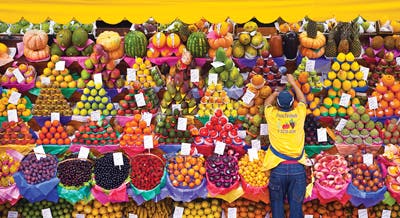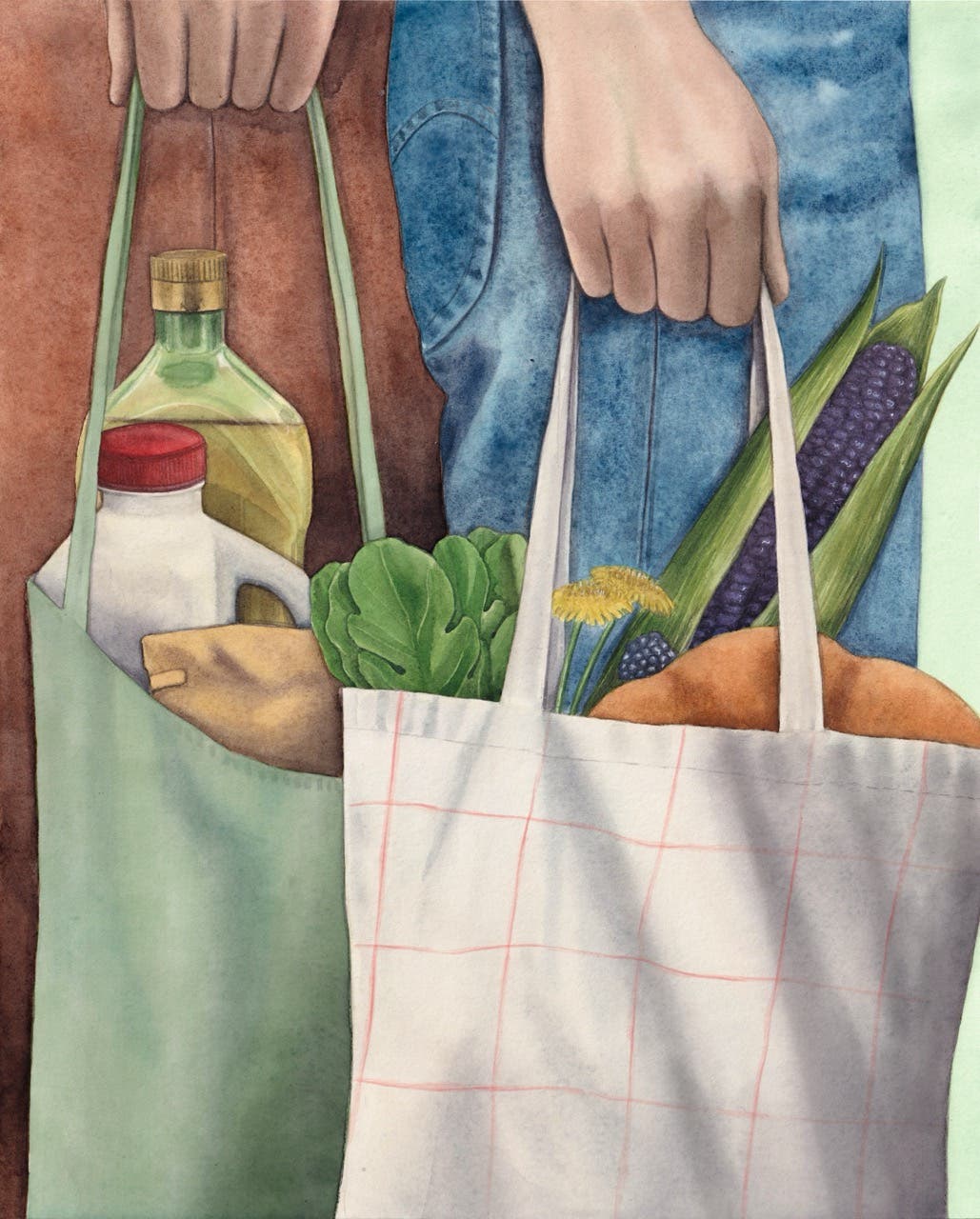
The Art of Displaying Food
Unseen is unsold. So goes the age-old maxim of market vendors, who know that the first and most crucial step in selling their product is catching a customer's eye. That's one of the reasons why a well-stocked market stall is such a visual feast, as much art exhibit as it is commerce. The meticulously stacked rows of mangoes and tangerines and apples (like the one pictured, at the Municipal Market in Sao Paulo, Brazil); the carefully arranged cheeses, their placement drawing attention to contrasting shapes, sizes, and textures; the towers of cookie tins or pickle jars at the end of a supermarket aisle—such displays are designed to grab our attention, lure us in, and encourage us to touch, smell, savor, and buy.
Travel to markets all over the world, and you'll see a few visual schemes recurring with remarkable consistency. A vendor in Beijing may not be selling the same ground spices as those that are peddled in Marrakech, but in both places you can find them presented in the exact same way: in lined baskets, molded by hand into a soaring conical shape. A produce vendor in Mexico City will arrange pods of okra in a graceful radial pattern that's strikingly similar to the way a vendor in Mumbai arranges his fresh betel leaves.
These artful displays accentuate the inherent beauty of the ingredients—the bright colors, the interesting contours—but they also play into consumer expectations. In St. Petersburg, Addis Ababa, Seattle, and beyond, merchants offer forth everything from chiles to aromatic roots to dried fish in sturdy woven sacks whose edges have been rolled down just so in order to give the impression of fullness. Imparting a sense of abundance is a primary aim of visually appealing food display. For one thing, it conveys the perception that the product is fresh, newly delivered; for another, those piles of produce reaching skyward seem to tell us that the wholesome fruits or vegetables are forever being restocked to meet demand.
Merchants go to great lengths to perpetuate this feeling of bountifulness, stuffing straw or paper into sacks and bushels to create a false bottom and, in the case of many supermarket produce sections, arranging fruits and vegetables in a single layer atop curved risers so it appears they're piled ten deep. As food sellers know all too well, few sights are more dispiriting than the last, lonely bunch of bananas in the bin or the stray coconut left to languish amid bits of dirt and dried-up palm fronds.
Just as a vision of plenty awakens our appetite and sense of well-being, so does the appearance of variety and diversity. "Variety gives shoppers a feeling of control," says Pierre Chandon, an associate professor of marketing who conducts studies on consumer behavior at the Institut Europeen d'Administration des Affaires, the Paris business school. "And well-organized market displays highlight that sense of variety." Neatly partitioned bins, tidy rows, straight-edged stacks—such thoughtful arrangements help buyers instantaneously differentiate one kind of fruit or vegetable or meat from another, inviting them to contemplate the great diversity of foods on offer. Nowhere is this principle more evident than at a big supermarket, with its clearly divided sections stocked to the shelves' edge with scores of different kinds of the same food, be it breakfast cereal, milk, or sliced bread.
The impulse behind other common food vendor designs is harder to guess at. Why the popularity of the pyramid shape, for example? Why not just a nice, round pile? "Such things must have developed over time, across cultures, through trial and error," says Baba Shiv, a professor of marketing at Stanford University who studies consumer decision making. "There must be something about that pyramidal form that triggers desire, or, we've even speculated, maybe causes customers to be less inclined to bargain down prices."
Chandon has a more prosaic theory. "Arranging certain items in a pyramid," he says, "may just be the easiest way to stack them." Either way, it's still nice to look at.
Keep Reading
Continue to Next Story










